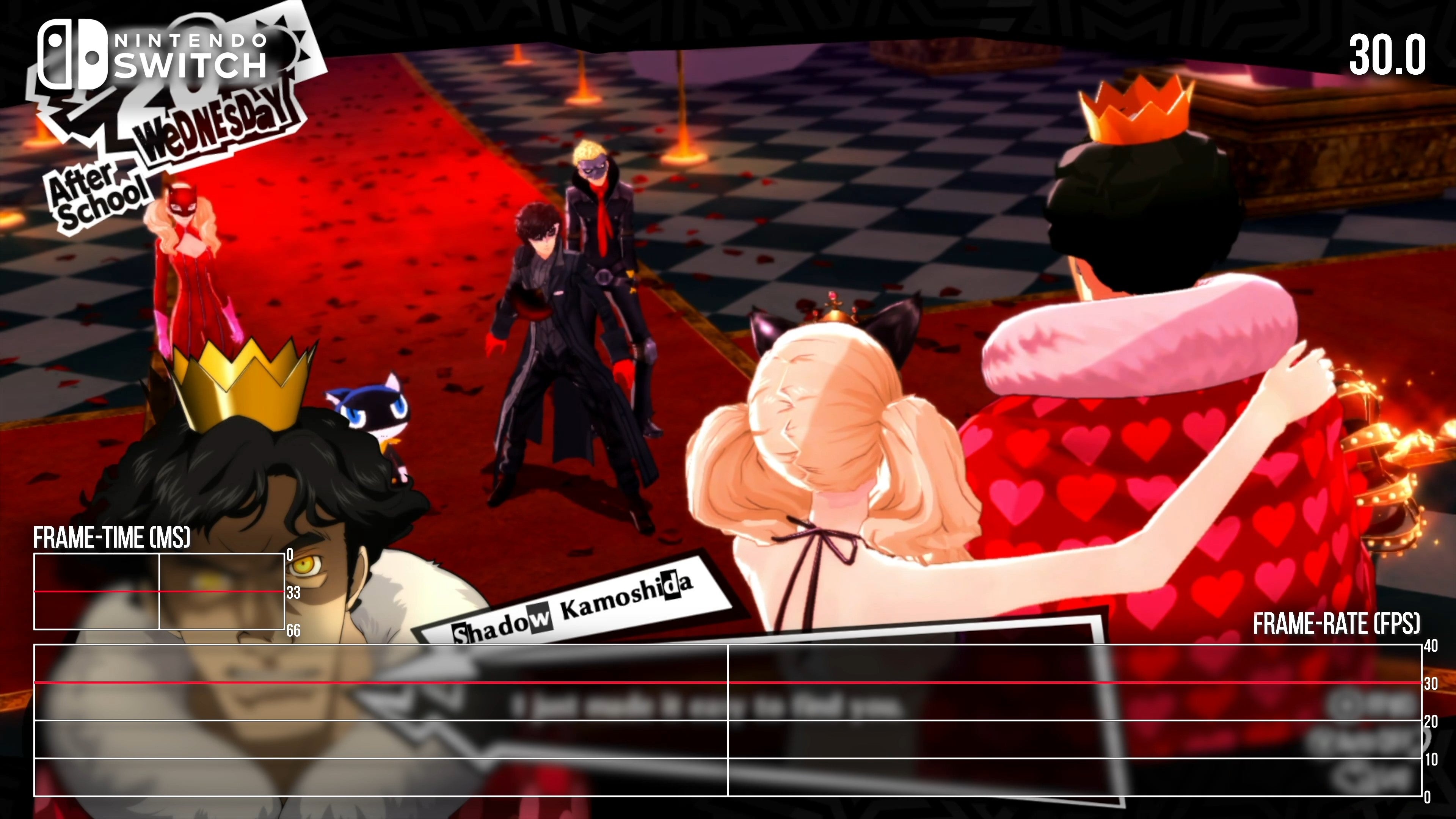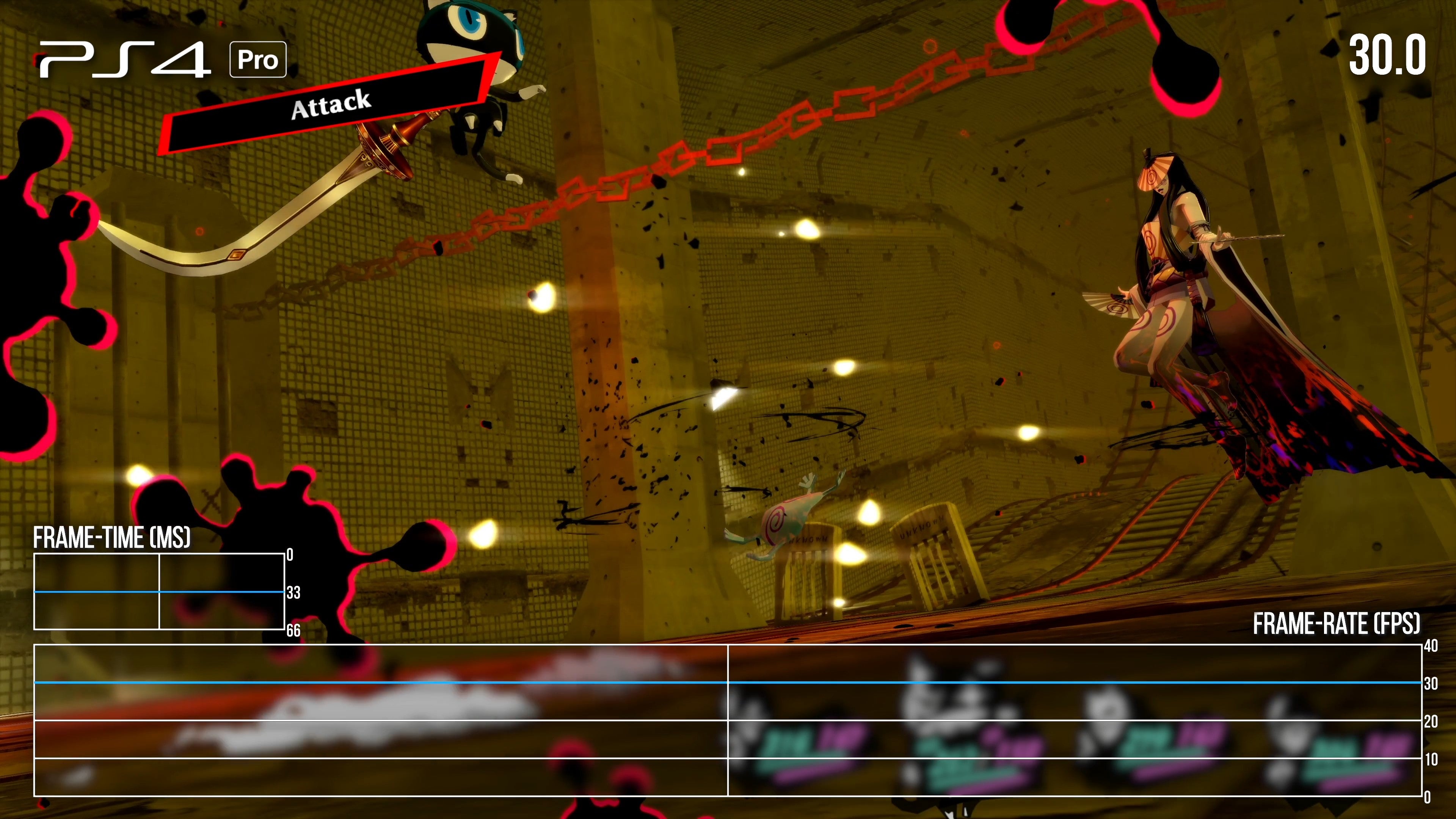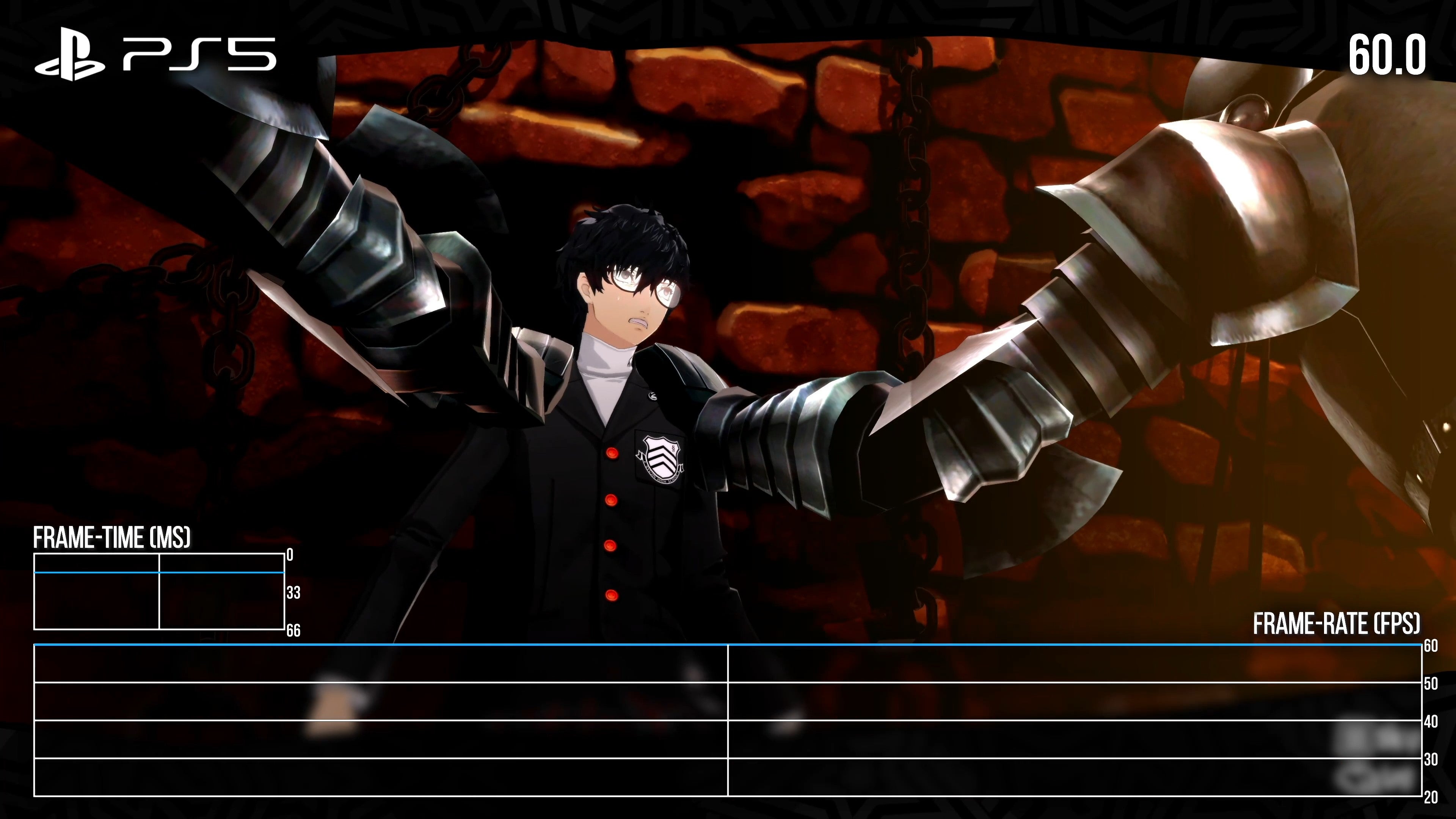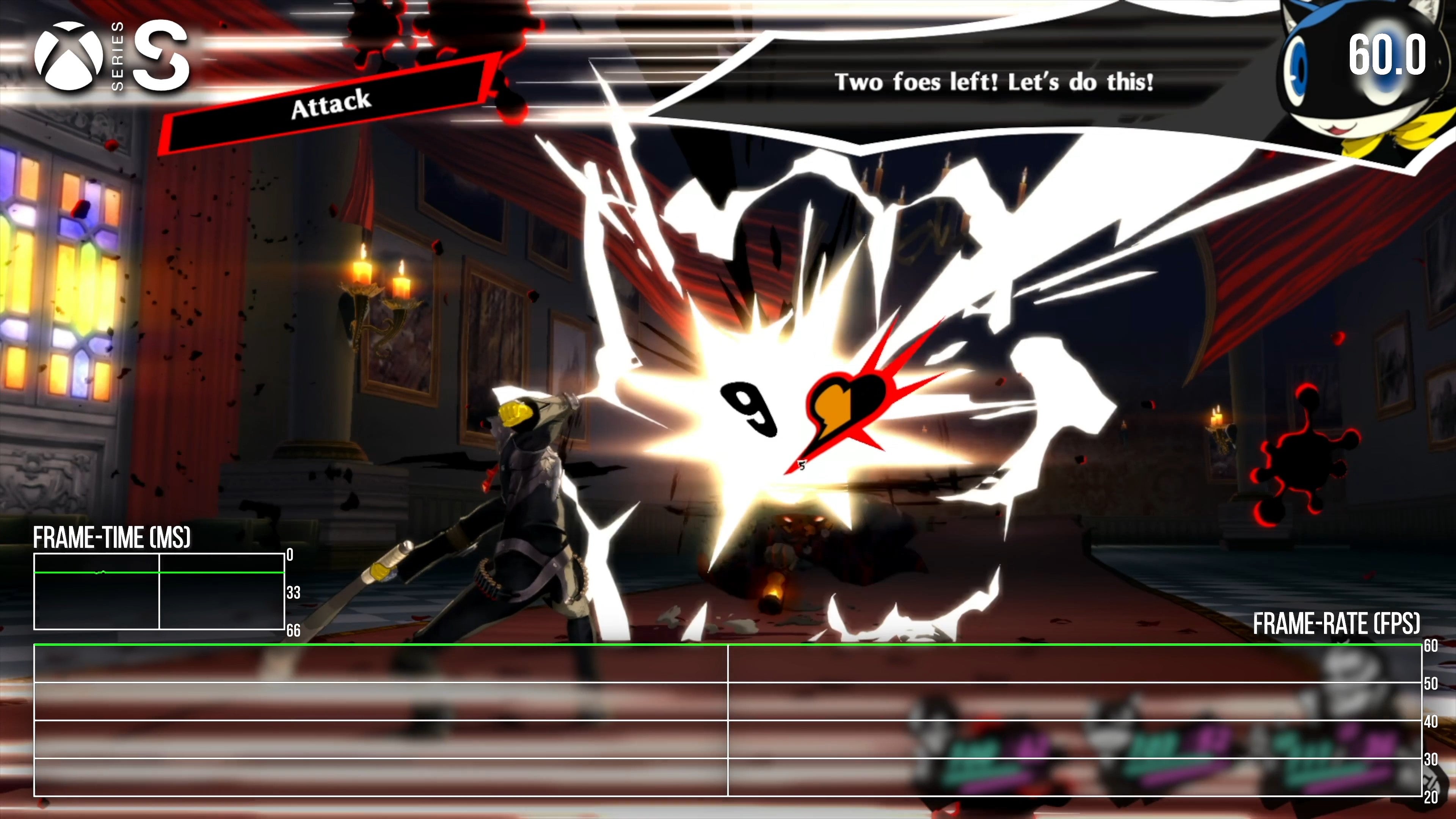Persona 5 is one of the most celebrated JRPGs of modern times, packing a compelling, character-driven story, a satisfying turn-based combat system and a confident sense of style. Technically speaking, it’s a very curious game: essentially, it’s a PS3 title at its core with assets and rendering tech built around Sony’s 2006 system, but ultimately released in 2016 on PS3 and PS4. An expanded re-release dubbed Persona 5 Royal came out a few years later on PS4, loaded with new content, gameplay improvements, and visual tweaks. After a three-year wait, that version of the game is finally out on non-PlayStation platforms, including current-gen console releases and a much-requested Switch port. So how does this PS3-derived game scale up to PS5 and Series X and is the Switch release everything it should be?
Persona 5 had a bit of an odd gestation. It was developed solely with PS3 hardware in mind, but after missing a few release dates it ended up shipping on PS3 and PS4 in the fall of 2016, as one of the last major titles to hit Sony’s seventh-gen system. Models are stylised but low-poly, environments are boxy and use basic baked lighting, and texture resolution is poor. The PS4 version of the game benefitted from a 1080p rendering resolution and UI but left everything else unchanged – a very barebones conversion of the PS3 code.
With Persona 5 Royal, you get the sense that Atlus tried to make the game fit a bit better on last-gen hardware. Some of the more egregious-looking textures in the original game are replaced with higher-res assets. New artwork adorns many of the game’s buildings and streets. Depth of field is added in certain gameplay segments, while 2D elements are redrawn with smaller text and new overlays. Lighting and colour grading are also reworked, with the updated game having a brighter, punchier look. These are the sort of differences that are only readily apparent in side-by-side comparisons, but the improvements are there. It’s definitely still a PS3 title at heart of course – which perhaps makes it ideally suited to the Nintendo Switch.
The Switch translation of Persona 5 Royal is indeed a full and feature-complete version of the game without any fundamental cutbacks, meaning that the same structure, style, and gameplay of the other console releases is present and correct. On the technical side, there are aspects worth praising as well: loading times are still mercifully brief and effectively masked by short animations, and despite a pretty large reduction in file size, the animated cutscenes are largely free of visible artifacting.
However, I came away with mixed feelings on the ultimate result. There are a few major issues here. Firstly, texture resolution has taken a substantial hit across the board. Switch is using texture assets derived from the Royal version, but they are significantly degraded relative to their showing on PS4. At worst, the results can look a bit mangled and in some cases we get missing material properties. This also has a knock-on effect on the game’s baked shadow, all leading to the conclusion that the port isn’t quite up there with the PS4 version. Not only that, rendering resolution has been cut back. In docked mode the game renders at 1440×810, slightly above 720p. Portable play is pared back further to just 960×540.
Persona 5 is a game that depends enormously on raw pixel count to resolve fine details, like the thin lines that surround character models. It presents a very high-contrast aesthetic without any sort of image treatment, lacking even a simple post-AA, so aliasing and other visual deficiencies are on clear display. At 1080p image quality is somewhat marginal already but at 810p the image looks quite messy. It’s not too bad, but I was expecting a stronger result here: fundamentally, Persona 5 Royal is still a PS3 game at heart, and many seventh-gen efforts run at 1080p in TV play on Switch.
| Console | 3D Resolution | UI Resolution | Performance |
|---|---|---|---|
| Switch | 810p/540p | 1080p/720p | 30fps |
| PlayStation 4 | 1080p | 1080p | 30fps |
| PlayStation 4 Pro | 2160p | 1080p | 30fps |
| Xbox One S | 900p | 900p | 30fps |
| Xbox One X | 2160p | 1080p | 30fps |
| PlayStation 5 | 2160p | 2160p | 60fps |
| Xbox Series X | 2160p | 2160p | 60fps |
| Xbox Series S | 1080p | 1080p | 60fps |
But it’s the portable mode that truly disappoints. At 540p, Persona 5 Royal is rendering about 56 percent of the full 720p panel resolution – and it shows. Expect a blurry and imprecise resolve with a clumsy handling of distant detail. This is far from the pixel-precise 720p I was hoping for. At least Atlus has opted for a bilinear scale here, unlike some other recent low-res Switch releases, so aliasing artifacts aren’t unnecessarily highlighted. And the UI seems to render at the console output resolution in both modes, so it tends to look much cleaner than the 3D content. The one plus point? All 3D elements play out at 30fps with no problems whatsoever, so at least performance is consistent.
I was disappointed by Switch, but results improve as we scale up to more capable kit. In terms of basic visual features, it’s just about what you’d expect – essentially, we’re getting the PS4 version rendered at different pixel counts. There are no readily apparent differences in texture quality, shadows, draw distance, or anti-aliasing. But higher resolutions hugely improve Persona 5’s image quality, and there’s a big spread here. PS4 delivers a 1080p image as previously mentioned, as does the Xbox Series S. PS4 Pro, Xbox One X, PS5 and Xbox Series X all turn in a full 2160p resolve without any oddities to suggest a non-native presentation.
Those are all fairly straightforward – but there are two exceptions. Firstly, PS4 Pro and Xbox One X get a 4K 3D resolution, but miss out on a 4K UI, getting the same 1080p 2D art as PS4. And the Xbox One S counts in at just 900p for 3D content, and appears to have a 900p UI as well, which feels strange and out-of-place given the age and visual complexity of this game. A 1080p showing seems like it would be well within the capabilities of the Xbox One, despite its limitations in more demanding software.
Stacking the consoles up side-by-side there’s a big difference in basic image resolve. Persona 5 has no anti-aliasing of any kind, so increased rendering resolutions massively improve the consistency of the presentation. Detail that looks barely coherent on One S is clear and sharp on One X, for instance. However, even at 4K, there’s still plenty of jagged edges and image breakup on fine details, like character outlines and highlights. Performance does at least clock in at pretty decent levels. To break it down, Persona 5 Royal targets 30fps on last-gen machines and 60fps on current-gen. And just like Switch, that target is effectively met, as across all my hours of testing I didn’t see a single framerate drop in 3D content on any home console platform. Regardless of system, you should expect a very consistent experience here.
Persona 5 has a lot of fast animation without motion blur of any kind, so cutscenes and complex attacks can be a bit hard to follow in real-time on last-gen consoles. Everything has a staccato, slightly choppy appearance that arguably fits well with the game’s anime stylings but doesn’t always feel great to look at. The boost to 60fps on current-gen machines basically resolves these issues, with much cleaner animation in motion. At 4K60 on PS5 and Series X, the game looks particularly pleasing – a sharp, crisp, and smooth rendition of Persona 5 that manages to hold up remarkably well.
There is one last platform to take a look at: the Steam Deck. Valve’s Linux-based portable seems like it might be able to get us the best of both worlds – a portable experience that rivals current-gen consoles. And initially, that’s exactly what you can get. Running the Steam Deck at 1080p resolution, I was able to run the game at max settings at 60fps in the opening sections without issue with more or less identical visuals and performance to the Series S. The Steam Deck even reported fairly light levels of utilisation, with low GPU clocks and minimal CPU usage.
Unfortunately, as soon as I got into the city areas, I experienced some harsh performance drops for seemingly no reason, without a corresponding spike in utilisation or clock speeds. Lowering resolution or settings had no effect in my testing – the drops remained regardless of what I tried. Early dungeon sections also exhibited serious FPS issues. Capping the frame-rate to 30fps using the in-game frame-rate limiter seemed to work fine however, and ended up being preferable to the SteamOS limiter as it incurred a much smaller increase to input latency. Switching the display to 40Hz is another option for a smoother, consistent experience. These would be my preferred ways to play on Steam Deck – but I don’t think the Deck is particularly well-suited to this kind of game.
And that’s because Persona 5 has a sharp, bold colour scheme that makes extensive use of pure black. Plenty of UI elements and darker 3D content are intended to be completely black. Unfortunately, the Steam Deck’s IPS LCD display is fairly mediocre by modern standards and lacks the contrast ratio to really do Persona 5’s art justice. Dull gray tones tend to dominate the image, particularly in areas at night. The Switch OLED ends up producing a much more visually dynamic image in my opinion for portable play, with a bold, punchy look with beautiful pure blacks. It offers much lower-res 3D but packs display technology that is a better fit for this particular title. It’s not an easy choice, but if I had to choose I think I would lean towards an OLED Switch for this game.
In summary, Persona 5 Royal is a highly engrossing, unique title that packs serialised, TV-style storylines into a 100+ hour single-player adventure. Relative to the original game, this is more of a remix than a substantially expanded title – I’ve beaten both and my sense is that there’s probably about 15 or so hours of additional content here, in addition to various gameplay tweaks and enhancements. But this is definitely the best version of Persona 5, and now it’s available to play across essentially all modern systems. The game scales fairly predictably across the more capable home console platforms, but these ports don’t seem to translate Persona 5’s PS3-era tech very efficiently, so more power-constrained consoles – the Switch in particular – come in with serious visual compromises relative to the PS4 release. There’s no bad ports here necessarily, just a couple that fall below expectations for modern conversions of seventh-gen software.



